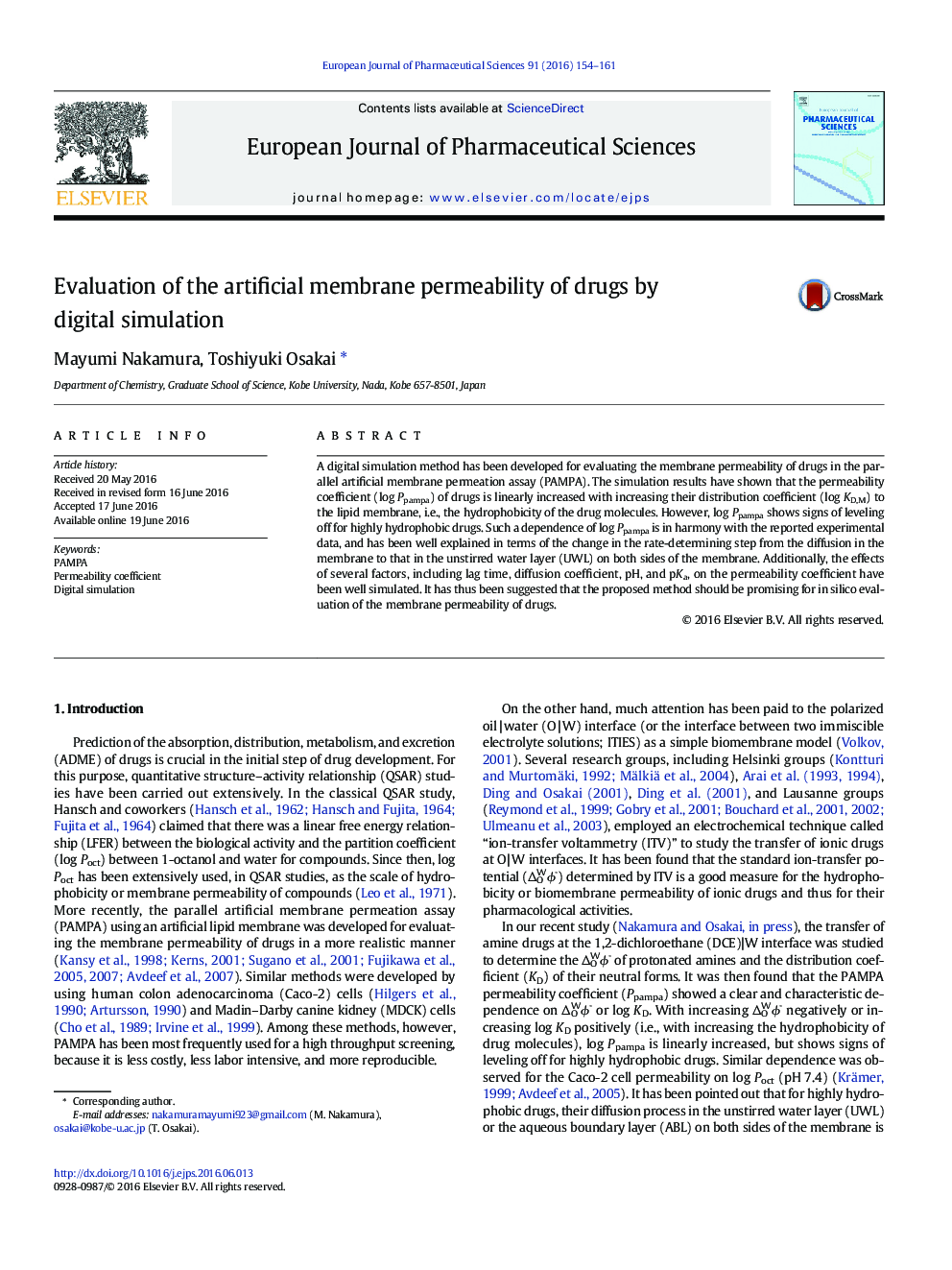| Article ID | Journal | Published Year | Pages | File Type |
|---|---|---|---|---|
| 5809516 | European Journal of Pharmaceutical Sciences | 2016 | 8 Pages |
A digital simulation method has been developed for evaluating the membrane permeability of drugs in the parallel artificial membrane permeation assay (PAMPA). The simulation results have shown that the permeability coefficient (log Ppampa) of drugs is linearly increased with increasing their distribution coefficient (log KD,M) to the lipid membrane, i.e., the hydrophobicity of the drug molecules. However, log Ppampa shows signs of leveling off for highly hydrophobic drugs. Such a dependence of log Ppampa is in harmony with the reported experimental data, and has been well explained in terms of the change in the rate-determining step from the diffusion in the membrane to that in the unstirred water layer (UWL) on both sides of the membrane. Additionally, the effects of several factors, including lag time, diffusion coefficient, pH, and pKa, on the permeability coefficient have been well simulated. It has thus been suggested that the proposed method should be promising for in silico evaluation of the membrane permeability of drugs.
Graphical abstractDownload high-res image (169KB)Download full-size image
